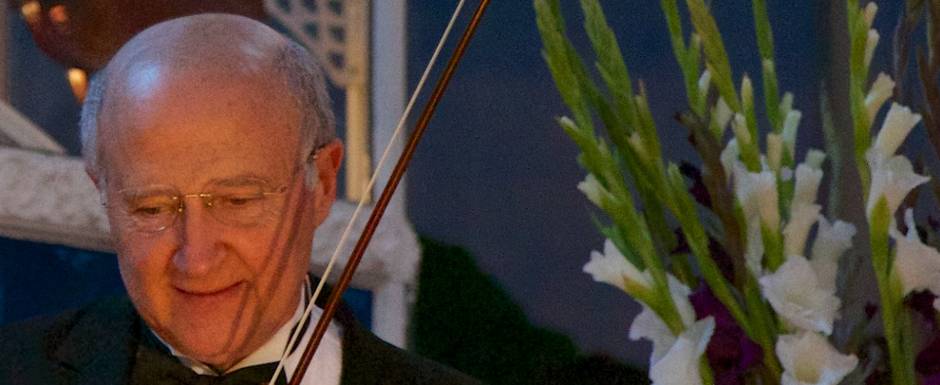More Violins
French
I have some other excellent French violins in stock, including a beautiful example by Auguste Sebastien Phillippe Bernardel (Images here), the very violin made for the 1866 exhibition.
I have a perfect violin by Juste (Justin) Derazey.
I have three excellent violins by Collin-Mézin dated 1879, 1889 and 1899: here are two of them: the 1889 example is still in the workshop, but will be ready soon. This violin (image here) by Émile Boulangeot is dated 1921, so it's officially antique next year. It's in lovely condition apart from a repaired crack running down from the treble soundhole (not a soundpost crack), and is branded Boulangeot a Lyon, in tiny block capitals, inside the back next to both the top and bottom blocks. It is accompanied by a lovely old letterhead receipt from Roger and Max Millant, dated 1936. Back then it cost 25,000 old French Francs. That's prewar currency: God knows what that is today.
Two 18th Century French instruments are by Jacques Bocquay, typically oversized but with a normal string length,( Images here) and by Claude Pierray.
Now, here's some fun: a painted violin by Nicolas Morlot. After all, why not paint a violin? It doesn't affect the sound and it's decorative. These days violinists are very conservative in their tastes, but there was a time when such violins were quite common. Joseph Mast of Toulouse, for example, often painted his instruments. This one, by Morlot, dates from around 1830, and is a tolerably well-executed copy of the famous propaganda picture of Napoleon and his horse Marengo, by Davide. (Images here). The front is not painted, so the picture could be the player's secret in most circumstances. Oh! I nearly forgot. It sounds really good: clear and powerful
English
I have a violin by Charles & Samuel Thompson, circa 1770, with a nice undated label inside.
I don't know whether there's another label of the actual maker under the table - but I don't
think so.
I can't find anything with a mirror, and, as the instrument is in good playing condition, I don't
think it's worthwhile to take the table off.
I have another violin by Goulding, circa 1820, and a wonderful Kennedy-workshop violin from around 1830. This is very dark - almost black - and in very fresh condition. Indeed it even had its original pegs, although they slipped and had to be replaced. It has two curious maker's marks inside, on the top and bottom blocks. Everybody thinks it's a Kennedy, but it isn't labelled or signed.
Other nationalities
Old Spanish violins are quite rare in the U.K. In 1996 I visited Barcelona for an exhibition of Spanish instruments, and bought the excellent catalogue home. On a recent visit to the continent I was delighted to find a really lovely violin by one of the makers featured. It's by Francisco Espana of Barcelona and it's dated 1844. It's fascinating.
According to the Spanish catalogue Espana was born in 1793 and learnt his trade in Mirecourt. He was established in Barcelona around 1820, and developed this Neapolitan model around 1835. Double-purfling seems to be typical of this maker at this time. Taking inspiration from the Gagliano family is not too surprising: Naples had been a Spanish possession from 1735 until the Napoleonic era, and there was still much trade between the two places in the mid-19th century. Being neatly made and of a good model it sounds very well or, as the Catalan catalogue says Va aconseguir una sonoritat molt bona.
Here's an Irish violin by Perry & Wilkinson. It's dated 1815, the same year as the battle of Waterloo.
Italian
Old Italian violins are now so expensive that I can't deal with them in the same way as the other instruments on this website. However, I generally have some that are available.
At the moment I have a very fine, certified by W.E. Hill & Sons, grand pattern violin by Nicolo Amati made in 1658. It is a well-known example of the maker's work, in an excellent state of preservation.
Another is by Giovanni Battista Rogeri of Brescia, circa 1690. This too has excellent certification. (Images here)



